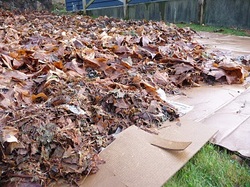planting your gardenPreparing the garden area - the no till way!
When establishing a pollinator garden, there’s no need to dig up or till the soil. In fact, tilling the soil often brings up weed seeds and releases vital nutrients. When starting with bare ground or an existing bed:
|
About the Projectgetting startedplant selection:: Ready, set, plant!TIPS & maintenanceCertify your gardenneighborhood contacts |
|
If replacing grass/lawn:
|
Planting tips
Take special care to remove non-native invasive plants.
These plants can quickly crowd out native plants, and often do not provide any benefit for pollinators. For more information about non-native invasives click here.
Water the plants to be dug and/or transplanted the day before.
This insures that the whole plant will be hydrated when its time to transplant.
Dig and/or transplant when it is overcast or during the cooler evening hours.
Never leave the roots exposed to sun, heat or wind. Remove the plant just prior to planting.
A perfect planting technique: Dig a hole, about twice as large as the diameter of the flower’s pot. Place the plant in the center of the hole. If the roots are loose, spread the roots gently under and around the plant. Fill the hole halfway with water, allow the water to settle the soil around the roots. Continue to add soil up to the point on the stem of the plant where its natural soil line would be. Lightly firm the soil around the transplant. Once again, water the plant.
These plants can quickly crowd out native plants, and often do not provide any benefit for pollinators. For more information about non-native invasives click here.
Water the plants to be dug and/or transplanted the day before.
This insures that the whole plant will be hydrated when its time to transplant.
Dig and/or transplant when it is overcast or during the cooler evening hours.
Never leave the roots exposed to sun, heat or wind. Remove the plant just prior to planting.
A perfect planting technique: Dig a hole, about twice as large as the diameter of the flower’s pot. Place the plant in the center of the hole. If the roots are loose, spread the roots gently under and around the plant. Fill the hole halfway with water, allow the water to settle the soil around the roots. Continue to add soil up to the point on the stem of the plant where its natural soil line would be. Lightly firm the soil around the transplant. Once again, water the plant.



